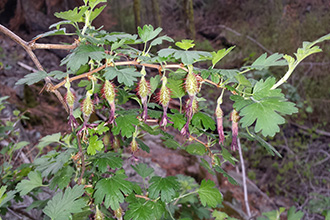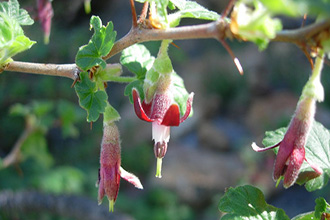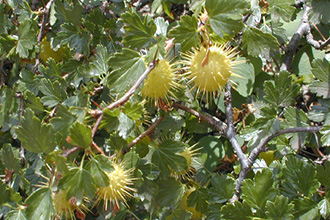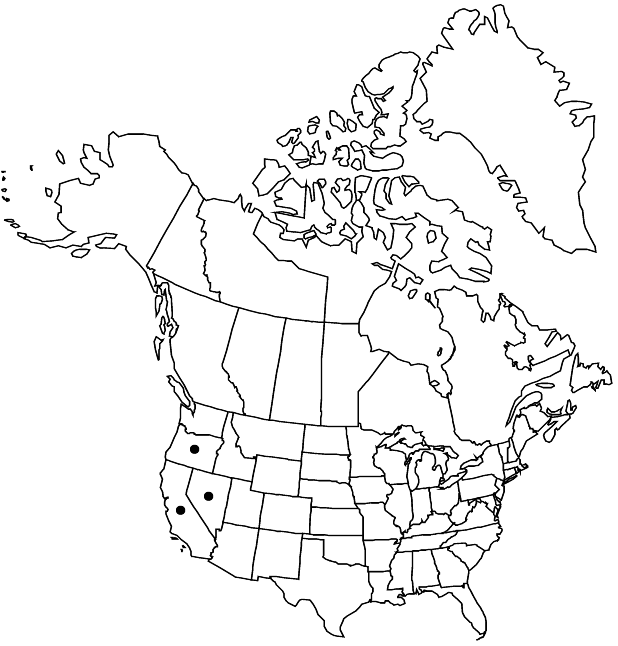Taxonomy: Kingdom - Plantae (plants). Subkingdom - Tracheobionta (vascular plants). Superdivision - Spermatophyta (seed plants). Division - Magnoliophyta (flowering plants). Class - Magnoliopsida (dicotyledons). Subclass - Rosidae. Order - Rosales. Family - Grossulariaceae (currant). Genus - Ribes L. Species - Ribes roezlii Regel
Ecology : Sierra gooseberry is common on disturbed sites. It tolerates open to partially closed canopies. Sierra gooseberry is a pioneer species, growing in primary-succession forests but most abundantly in secondary-succession forests. The passage of time following a disturbance decreases the density of Sierra gooseberry, probably due to decreased soil moisture and nutrients. Sierra gooseberry is a pioneer species in the succession of mixed-conifer forests dominated by sugar pine (Pinus lambertiana) in the Sierra Nevada and eventually is suppressed by coniferous reproduction due to competition for soil moisture and nutrients. In California, Sierra gooseberry occurs in secondary-succession montane chaparral.



